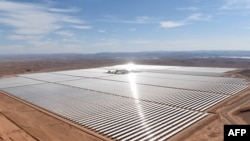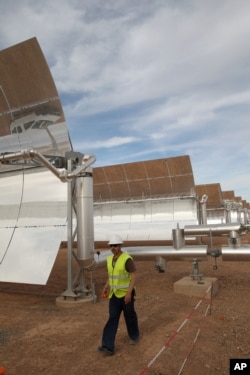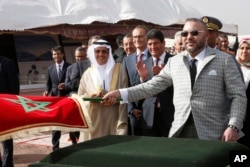Morocco has some of the most ambitious green energy goals of any developing nation, aiming for renewables to represent 52% of installed capacity by 2030 from 37.6% now, mostly through investments in solar and wind plants.
However, it is already falling behind on solar, with only 831 megawatts (MW) installed so far compared to the 2,000 MW that was planned for 2020. Wind has made up some of the shortfall but polluting coal plants still make up most output. Construction has not even started on the planned $2 billion 800 MW Noor Midelt I plant, which was meant to start operating this year, after the Energy Ministry and grid operator ONEE rejected the proposed CSP technology, the sources said.
State energy agency MASEN awarded the contract to develop Noor Midelt I in 2019 to a consortium led by EDF Renouvelables. It asked for the plant to have both photovoltaic (PV) technology, which is cheaper but has little ability to store power, and CSP, which is more expensive but continue powering the grid for hours after dark.
However, after the contract was awarded ONEE and the Energy Ministry said they would only agree to buy the power if MASEN either abandoned CSP for PV or changed from thermal salt energy storage to batteries, the sources said.
MASEN and the grid eventually signed a power purchase agreement, but there are still discussions between MASEN and the development consortium over the technology specifications, the sources said.
MASEN says the project was delayed due to the pandemic and is now in the final stage of development but it did not respond to a specific Reuters request for comment on the technology dispute.
EDF Renouvelables said Morocco had decided to restart the development in 2022 with a mix of PV, CSP and battery storage. It said the project was "at the final stage of development" and all partners "remain committed."
The Energy Ministry did not comment directly on the problems at Noor Midelt but it said it "tries to be as technology agnostic" as it can as long as costs, sustainability and security objectives are maintained to avoid undue risk.
The World Bank and the European Investment Bank said their financing terms for the project remain valid as discussions continue between MASEN and the consortium. The World Bank said construction will take 30 months once negotiations end.
CSP Plant Difficulties
ONEE cited problems at Noor Ouarzazate, Morocco's best-known solar complex, as the reason for wanting MASEN to change the technology at Noor Midelt, the sources said.
Technological problems stopped all output at a 150 MW plant there for a year from summer 2021, said two of the sources. "Noor Ouarzazate helped put Morocco on the global map of large-scale renewable energy projects. But a closer look in terms of operation costs and maintenance issues show that the plant is rather a liability," said a source close to Noor Midelt I.
"With hindsight, Ouarzazate served as a testing ground for an immature CSP technology," said another source.
Morocco's economic, social, and environmental council recommended abandoning CSP altogether in a 2020 report due to its high cost compared to PV and wind. That report said MASEN was operating an $80 million a year deficit at the Noor Ouarzazate complex because it is selling power for less than the production cost.
MASEN, which commissioned Noor Ouarzazate, said the plant had shown "good performance in 2023 both on peak and off-peak hours." It added that CSP technology was a solution that offers storage, helping address grid needs at peak hours.
ACWA Power, the developer of Noor Ouarzazate, and grid operator ONEE did not respond to Reuters requests for comment.

















Forum